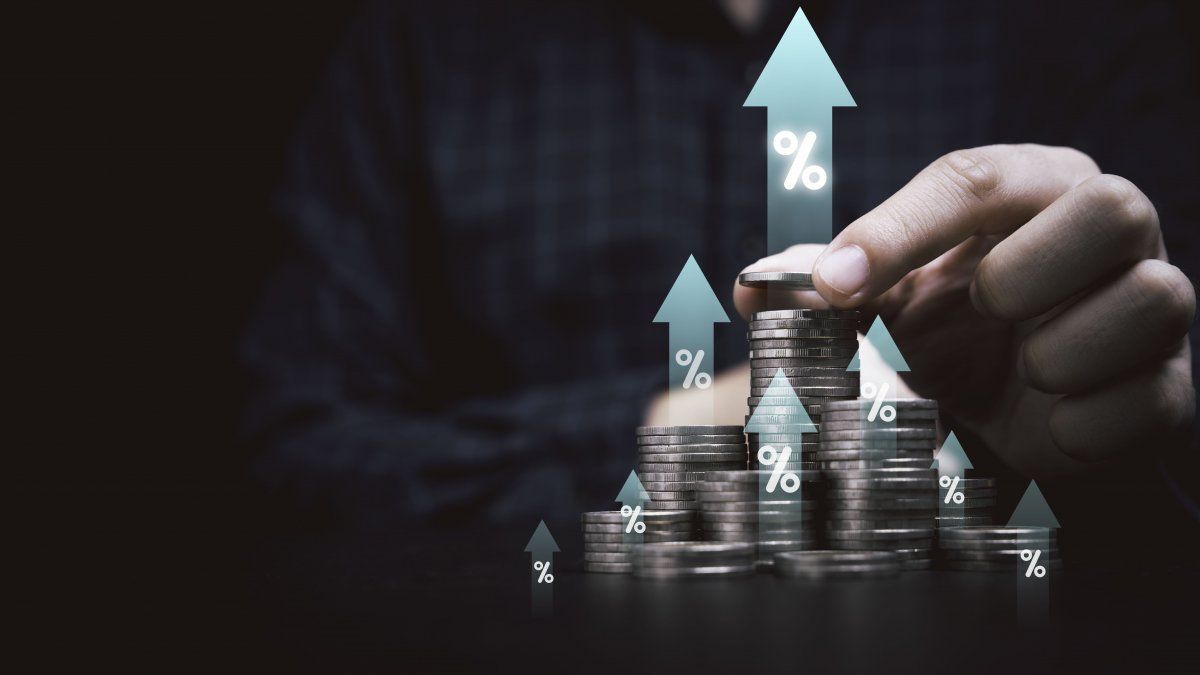The average interest rate that banks pay in Uruguay for deposits in Dollars reached a maximum in more than 15 years. According to the record itself of the Central Bank (BCU) It stood at 3.5% for the average of all types of placements. There are variations of course, depending on the term and depending on the financial institution being considered.
The increase in the passive interest rate in the local market is a reflection of the increase in the international interest rate that has occurred in recent years, a consequence of the decision of the main central banks – especially the United States Federal Reserve (Fed)– to combat the inflation with a contractionary monetary policy (it is a positive real rate).
Passive rate in dollars.jpg
After great cycles of monetary expansion (first to get out of the mortgage crisis and then due to the impact of Covid), the inflation push that was registered after emerging from the pandemic led central banks to take the reins of the fight against inflation by increasing rates and aiming to control what did not happen for a long time: an inflation rate that complicated the macroeconomic order and social humor itself.
The increase in interest rates, obviously, has an impact on the progress of the company itself. economy: with the objective of combating inflation, a certain impact is associated with the level of activity that economic management has to balance, in any country. In the United States, the Federal Reserve is balancing both issues, with little help from the fiscal policywhich continues to have a great expansion with a Federal Government deficit that exceeds 5% of GDP.
All of this affects very directly the Uruguay, among other things because it is a still highly dollarized economy. And I say even because the objective of the Central Bank is to go to a process of pesification, that is, to extend the use of the Uruguayan peso as a transaction currency more widely. It is a long path that -perhaps- should involve other issues beyond monetary policy decisions, but that is another matter.
For the purposes of local impact, the increase in the interest rate is a stimulus to savings. Uruguayans continue to save mostly in dollars and those who have left their dollars in banks have lost the real value of their savings in a very significant way in recent years. Those who diversified their savings by placing indexed weights or other type of non-bank placement (for example, in Monetary Regulation Bills), have had better vision (or better luck). This said with Monday’s newspaper and always remembering that in the economy there is an infallible rule: the higher the rate, the greater the risk.
Now the situation changes and there is more return for the dollar savings Will this act as a stimulus to savings? It is an issue that will be answered as the months go by, but it is not easy to anticipate a projection, because it is difficult to do a comparative analysis. Indeed, things have changed a lot since the local market offered interest rates in dollars of this magnitude; You have to go back 15 years, at least. And society has changed a lot, in the world and in the Uruguay: the formation of the family, access to certain goods and services and – therefore – the propensity to consumption based on a certain disposable income, has had important changes in recent decades.
In general, those who analyze long-term trends, to apply them to marketing and finance, observe that – considering the same social and personal situation – there is a greater propensity to consume or anticipate consumption (credit).
We must also consider another key factor: if we were to exclude the pandemic, the Uruguay It has been more than 20 years since it has gone through a serious economic crisis, which is a deep value of trust and stability. The pandemic itself was managed quite expertly, although – of course – many people suffered, not only in health terms but also in economic terms. But there, credit and social support mechanisms from the State operated to cushion the blow. The consequence was an increase in indebtednesswhich is being digested little by little, as the economy is reactivated.
Here appears a weak side of the situation: with a relatively higher indebtedness, both at the level of the State and of families and companies, and a higher interest rate, it will not be easy to alleviate the financial situation and even less face some type of shock. external, which can always be the order of the day. Even less if the economy is not as strong as expected. Uruguay has investor grade and has achieved very notable progress in its macroeconomic and institutional position; but now the interest rate is higher and the scenario has changed, with a higher opportunity cost of money. This can condition consumption, with the aforementioned corollaries, and also investment. And no one is guaranteed stability forever. He earns it day by day, year by year, election by election.
Source: Ambito




